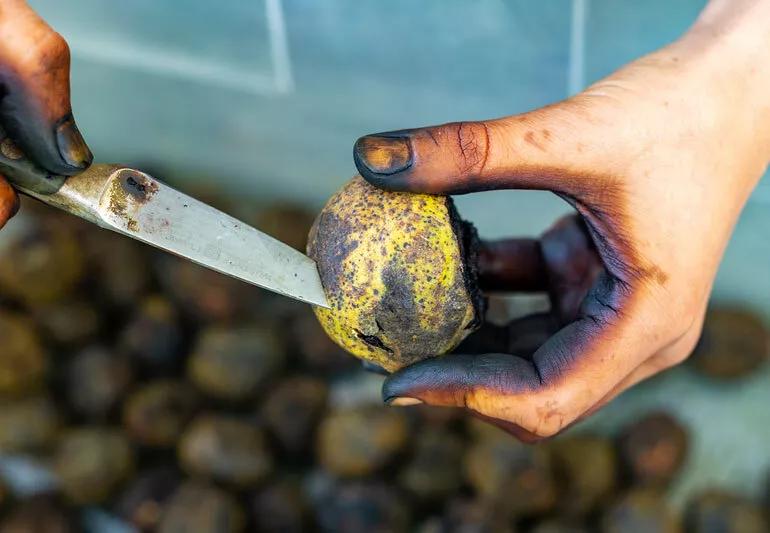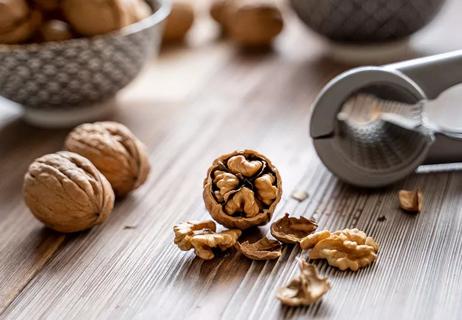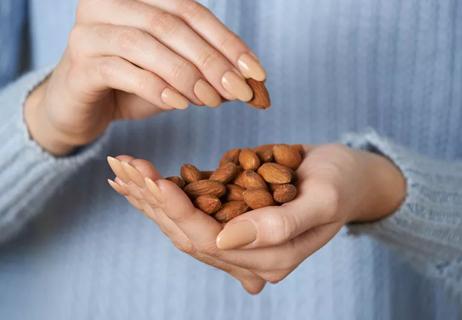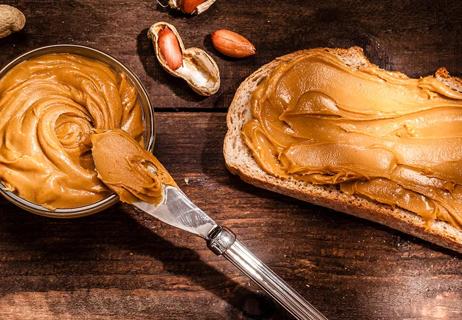What you need to know about the hidden risks

Whether you have a black walnut tree on your property or are the foraging type, harvesting your own nuts can be rewarding. And it’s a great excuse to get outside, especially for families with younger kids.
Advertisement
Cleveland Clinic is a non-profit academic medical center. Advertising on our site helps support our mission. We do not endorse non-Cleveland Clinic products or services. Policy
But under the hull of this popular nut lurks an issue that could cause some painful and persistent issues for many. The black walnut, while offering a bolder flavor many like, also contains a toxin that’s not only deadly to plants, but can also cause skin irritation in humans.
To learn more about the toxin, the symptoms and how to deal with unpleasant reactions from encounters with black walnuts, we talked to dermatologist John Anthony, MD.
Found across a good portion of the Midwest and Eastern United States, the black walnut is, is a popular food item that is sought out for its complex, earthy taste for snacking, baking or turning into the popular Italian liqueur nocino. But to get to that walnut, you’ll need to get through its large husk and tough shell. And this is where trouble could come in the form of an irritant hidden under the husk.
Black walnut trees produce a toxic chemical called juglone, a chemical so strong it can damage and even kill off vegetative growth around these trees and is blamed for issues in horses who are exposed to black walnut shavings. And juglone can have an unexpected and unpleasant consequence for humans who come into contact with it when hulling the walnuts or even when gardening nearby.
Advertisement
“The juglone causes an irritant reaction,” says Dr. Anthony, “and the juglone does two things. It causes the production of a chemical that binds to the skin and has this dark coloring, almost black.”
That chemical produces the same kind of pigment as henna, he says, and stains the hands. On top of that, he says, is the irritant action of juglone which can cause pain, itching and severe blistering, and unexpected torment. He also notes that woodworkers who work with black walnut wood see these reactions as well.
Dr. Anthony points out, “Because it’s an irritant, you won’t have the kind of allergic reaction you get from a bee sting. The real danger is the skin on your hands getting torn up from the blisters. It not only makes it hard for you to do many daily tasks but you also risk infection.”
If there’s one good thing to take away from the black walnut’s hidden danger, it’s that it’s very specific to this one type of nut. Having a reaction isn’t an indication of a danger you’d come across with other nuts.
“There’s no association with a nut allergy,” Dr. Anthony says. “It’s sort of a novel thing with these particular nuts from these particular trees. They’re their own special pain.”
This isn’t an allergic reaction, but rather a type of irritant contact dermatitis that most people exposed to it will develop. “Some people will be more susceptible to the effects and it won’t take much at all to cause the reaction,” he adds. “For some people, it might take more to irritate their skin. But I think most of us would react to the juglone in black walnuts in some way.”
Perhaps the most important thing to keep in mind is to always wear gloves when you’re handling black walnuts. Disposable gloves are the best, obviously, because you can then just toss them and not worry about getting any juglone on anything else.
You could also use heavier rubber gloves used for household work, Dr. Anthony says, but he advises to wash them thoroughly with soapy water after you’re done.
“Also pay attention to surfaces you’re working on black walnuts with,” he adds. “You could potentially get juglone on that surface and spread it, so be sure to be careful and aware of what you’re doing and clean up with a paper towel.”
But if you didn’t wear gloves and your bare hands come into contact with the black walnut husk, Dr. Anthony says the best thing to do is to wash your hands with soap and water. “If your kids are on the playground and there’s a crushed black walnut from a nearby tree that they’re handling, get them to wash their hands.”
As for the staining, if it’s a bad case, you’re just going to be stuck with it for a while. “The pigmentation is semi-permanent. It just has to wear off and it can take a long time to fade.”
As for any home remedy from lemon juice to baking soda that you might come across on the web claiming it can get rid of the staining, don’t get your hopes up, says Dr. Anthony: “There’s no chemical I know of that affects it that would be safe to use.”
Advertisement
He adds that it could take weeks all the way to two to three months for the staining to wear off. “I would say at least 30 days but it can take longer.” In some cases, it’s also possible for areas of skin that were highly saturated by the juglone to peel off in the healing process.
Blistering as a result of contact is rarer but can happen and they can be painful, especially bigger ones. “For small blisters, leave them alone to let the skin underneath heal,” Dr. Anthony advises.
For bigger blisters, though, he says, “Sometimes we will drain larger ones that are particularly uncomfortable, particularly around the nails. But you should seek medical attention rather than attempt it yourself.”
If a blister has inadvertently torn or popped, he adds that you should apply either a topical antibiotic ointment or vaseline and loosely cover it with a bandage. “It doesn’t take too long to heal but you don’t want to risk infection or cause any further damage.”
To alleviate burning and itching, Dr. Anthony recommends starting with gently applying hydrocortisone cream. While you can buy this over the counter, he adds that for severe cases there are even stronger steroid cream your healthcare provider may offer.
Advertisement
For most cases, despite the shock of the symptoms, you probably won’t need to seek medical attention. But Dr. Anthony says that there may be some scenarios where that’s required: “If you’re in substantial pain or increasing pain, fever, spreading redness or increased discharge, you’ll want to seek medical attention mostly to protect against possible infection.”
Advertisement
Learn more about our editorial process.
Advertisement

This legume can reduce cholesterol and help with weight loss and healthy blood sugar levels

Packed with protein and potassium, this green-tinged nut can help with gut health and cholesterol levels

Packed with healthy fats and antioxidants, walnuts can help with heart, brain and gut health

These nuts are packed with healthy monounsaturated fat, protein and calcium

They’re not really nuts, but they ARE good for you, helping with digestion and blood sugar

It's a simple protein, but you still need it in moderation.

Home remedies are unlikely to cure your contagious foot fungus — and they might even make it worse

If you’re feeling short of breath, sleep can be tough — propping yourself up or sleeping on your side may help

If you fear the unknown or find yourself needing reassurance often, you may identify with this attachment style

If you’re looking to boost your gut health, it’s better to get fiber from whole foods